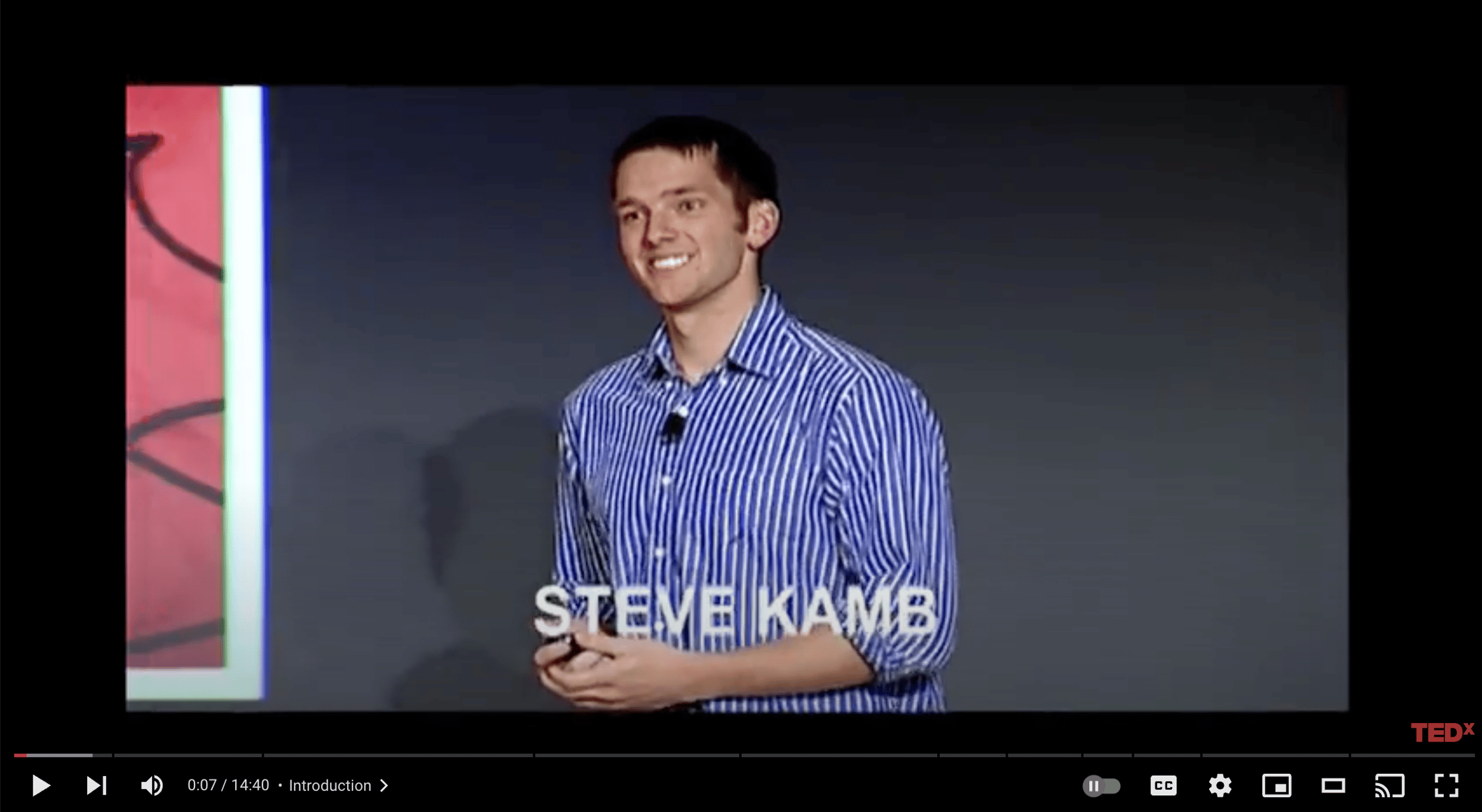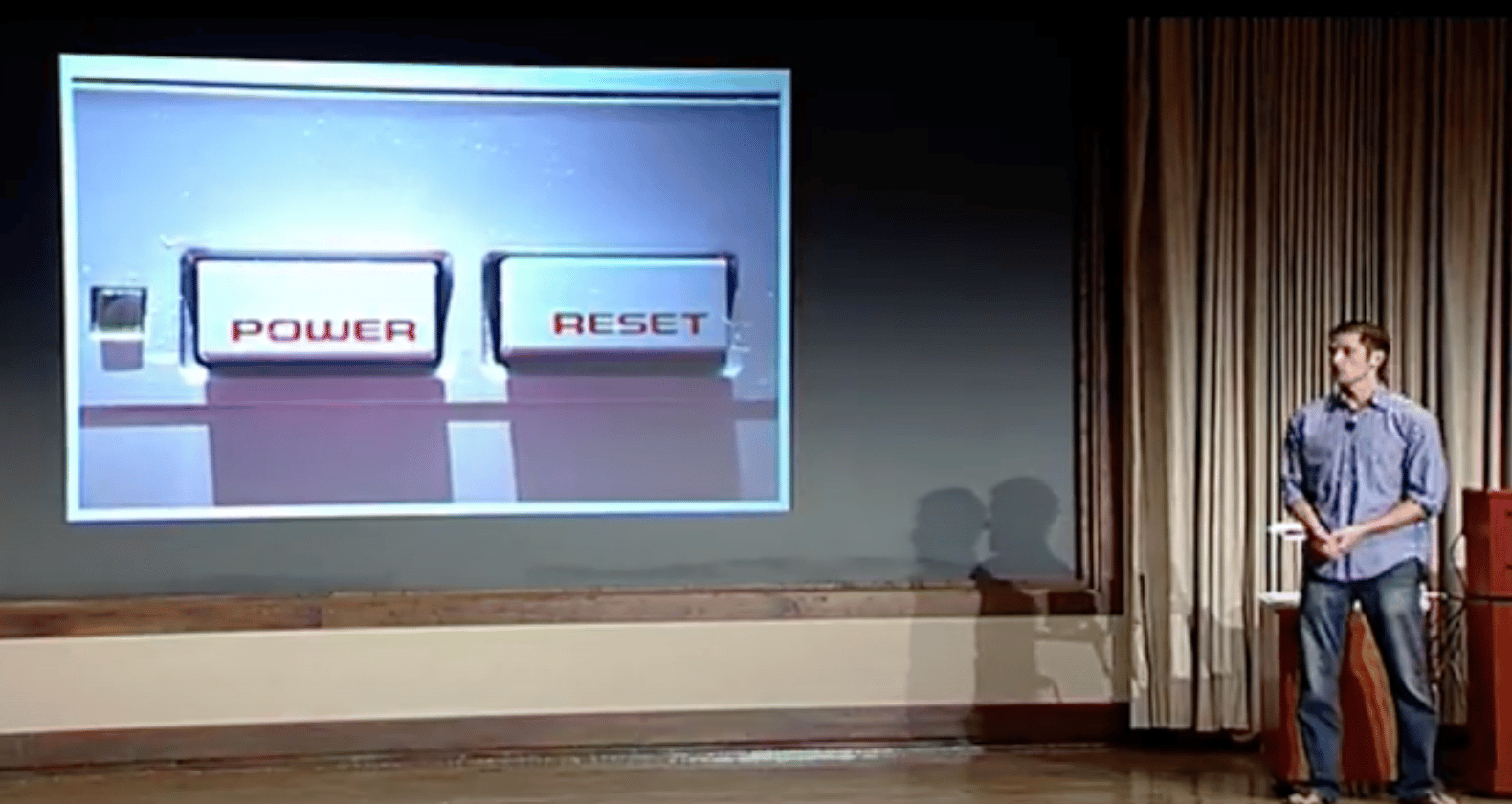For the first time in 10+ years, I rewatched my 2012 TEDx talk:
“Nerd Fitness and Resetting the Game of Life.”
My first thought: “Whoa, Steve. Those are some EPIC sideburns.”
My next thought: “Bold choice with the striped shirt, jeans, and flip flops!”
Then I gave myself some grace.
I’m deeply uncomfortable with the spotlight. I hate public speaking. It makes me want to vomit every single time. I also don’t like being on camera.
And yet, I have ideas that I think can help people.
So I write and share my ideas. And sometimes, I force myself to get on stage. For this talk, I had to take two buses through the jungles of Ecuador (where I was living at the time), and then take two flights to get to Atlanta.
I stayed at my friend Kappy’s house, and the night before the talk, I decided to stay up and rewrite the whole damn thing. That morning, I practiced my talk to his two dogs, and then hurried over to Emory and just went full YOLO and shouted my talk into the universe.
12 years later, rewatching this talk, I have thoughts.
If you want to take a trip down memory lane, you can watch the talk on YouTube, which surprisingly has over 100,000 views.

My Biggest Surprise Rewatching…
It wasn’t as embarrassing as I thought!
Baby Steve actually had some decent ideas and was an okay storyteller! Especially when you consider I had rewritten the entire talk 12 hours prior and was on zero hours of sleep. Oh, to be young and naive again.
This is the slide that cracked me up the most, and I think the one I want to spend the most amount of time on:

Throughout most of my early 20s, I spent an unhealthy amount of time playing video games. At the time, I had convinced myself that the video games were the problem. They had become too addicting, too enjoyable, and they were the reason I wasn’t making much progress in my real life.
The reality is one level deeper. It wasn’t just the video games. It was that I didn’t have much life to look forward to. I didn’t like my job (selling construction equipment), I didn’t have goals or things in my personal life to look forward to. So I escaped into video games.
Older and wiser and with shorter sideburns, I have a better understanding of human behavior and my own personal struggles with procrastination and escape.
As laid out in my friend Nir Eyal’s book Indistractable, if we don’t address the root cause of distraction or escape, our brains will get very good at finding yet another thing to get hooked on!
In other words, if you can go one level deeper as to WHY you’re procrastinating or avoiding reality (possibly with the help of therapy) it can help you get out of the rut.
Once I found something to look forward to (for me it was turning life into an adventure video game like Zelda and EverQuest), suddenly video games became a far less appealing use of my limited free time.
These days, I still play video games regularly (I just finished Fallout 4), but I now know more.
When video games take over too much of my life, it’s probably because I’m avoiding confronting the reality of a problem in life.
Maybe I’m scared to get back to work on my secret-book-shaped project, because I worry it’s not good enough. Or maybe I’m avoiding an uncomfortable conversation or addressing a real problem in my life.
So, the solution isn’t unplugging the Playstation. It’s addressing the problem I’m actually working hard to avoid.
It’s better to know why I’m procrastinating instead of just blaming it on video games.
How’s My Epic Quest Going?
In my talk, I talk about my Bucket List, which I renamed my Epic Quest of Awesome. For a good 8 years, this was a big focus of mine.
Literally earning experience points for accomplishing quests in real life.
I did this after exercising around the world and living 14 months of adventure travel.
I even got a book published about turning life into a game, Level Up Your Life, back in 2016. I recently reacquired the rights to this book, and I’m hoping to put out a Version 2 in the coming year.
(This is why you can’t buy it now, sorry about that!).
12 years later, life is a bit different.
If you’ve been reading this newsletter for the past year, you might have noticed a theme: acceptance and self-compassion.
I’ve changed my perspective on goals.
I had run myself ragged for over a decade, building Nerd Fitness, giving as much as possible, chasing the next goal. Each goal led to the next goal. Each dragon slain required me to go find another dragon.
It became an endless loop of perpetual “more more more.”
And eventually I realized that I had gotten pretty far away from what actually made me happy.
These past few years, I’ve decided to live a bit differently.
Instead of big long term goals with dramatically organized plans, I’ve narrowed my focus to: “How can I have a good day today?”
I live as if I will NEVER “get there.”
I still have goals, and I still have things I hope to accomplish in life.
I’m just playing a different game than I was at 28. I think this “life is a game” philosophy served me well at the time, and I think now I have added a few extra doses of reality to how this plays out.
For somebody stuck in a rut, and escaping too much into virtual worlds, I think thinking about life like a video game can be a pretty fun way to try and break out of that rut.
It might not work for everybody, but I think having things to look forward to, and goals to work on, and then finding ways to make tiny bits of progress can help.
I cover this in an article called “A Nerd’s Guide to Success and Happiness” which still holds up!
A little bit of nuance and perspective can go a long way when gamifying life!
Wading into the Comment Section…
I made the perilous choice to wade into the cesspool of the internet:
The comment section on my video.
I was shocked to see that 95% of the comments were super positive!
There was one comment though, that provided me a unique opportunity to do something I’ve always wanted to do.
Prove somebody wrong on the internet.

In my talk, I mentioned that I hoped to one day deadlift 400+ pounds. I grew up scrawny and weak, and I later learned that I have spondylolisthesis, which means two of my vertebrae don’t line up.
For the past 15 years, deadlifting has been my favorite exercise. It’s the movement that has made me feel the most strong and empowered.
I went and found a video of myself from 2018, where after 6+ years of dedicated, slow growth and focus on getting stronger, I deadlifted 420 pounds at a bodyweight of 172 lbs. No belt, straps, and double overhand grip too!

And yes. 12 years later, I HAD to reply and let the guy know I did it.
Not gonna lie, it felt good proving a random internet commenter wrong! Hahahaha

Petty and unnecessary? Yep!
Satisfying? Very.
Two Buttons: Power and Reset

I finished my talk with something that was far more powerful than I had expected.
The original Nintendo Entertainment System has two buttons: POWER and RESET.
In the game of life, we get to hit the power button once. It turns on when we’re born, and it turns off when we die.
But we also have an opportunity to hit the RESET Button. If there’s a thought or identity you have that’s no longer serving you, or some aspect of life that just isn’t working…it’s okay to hit the reset button.
It’s okay to try again, even if you failed the last time.
Remember, our knowledge carries over, and we never start back at square one.
Game on, my fellow nerd!
-Steve
###
The post I apologize for my sideburns and striped shirt first appeared on Nerd Fitness.
from Nerd Fitness https://ift.tt/1hoTDOJ